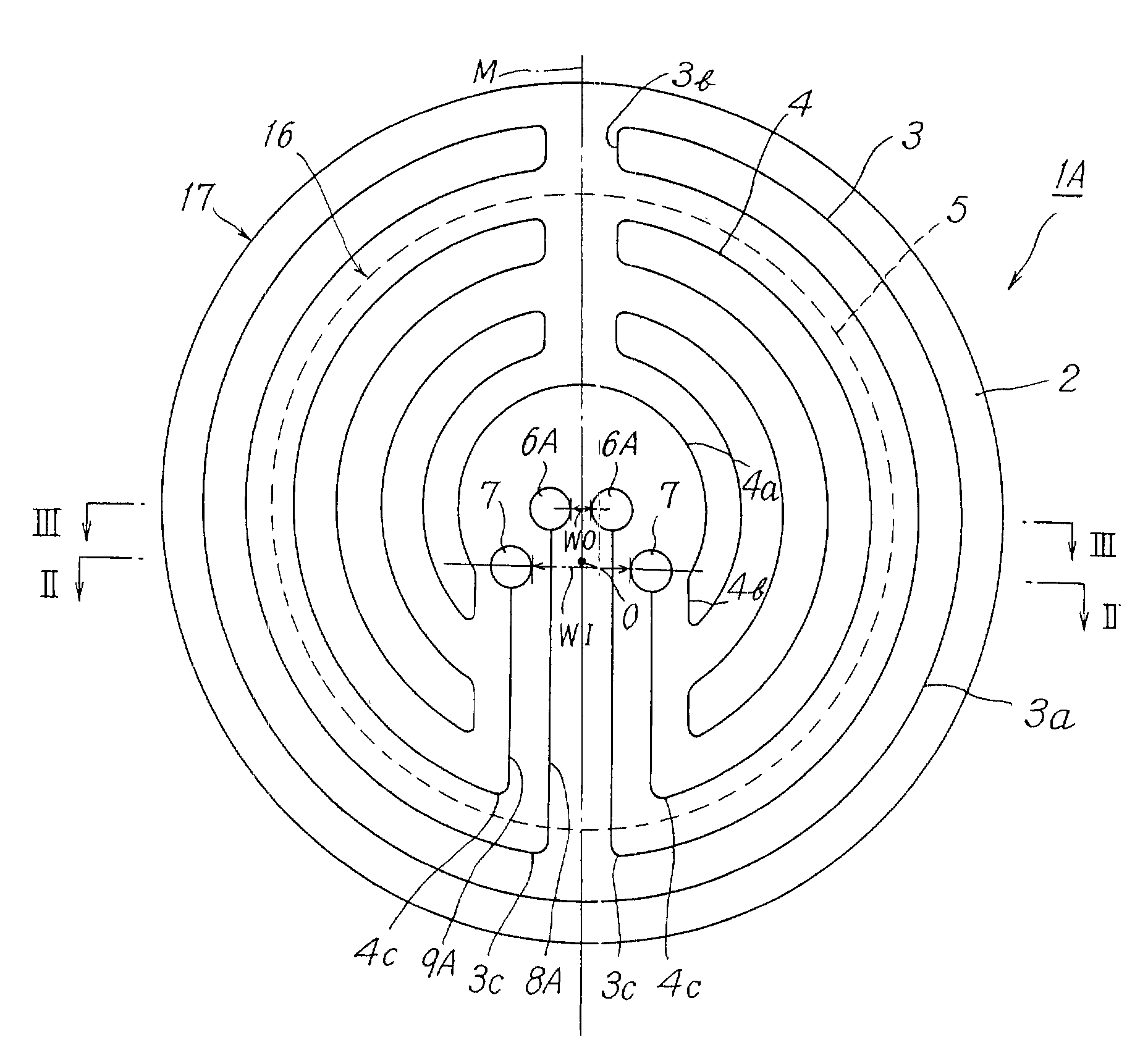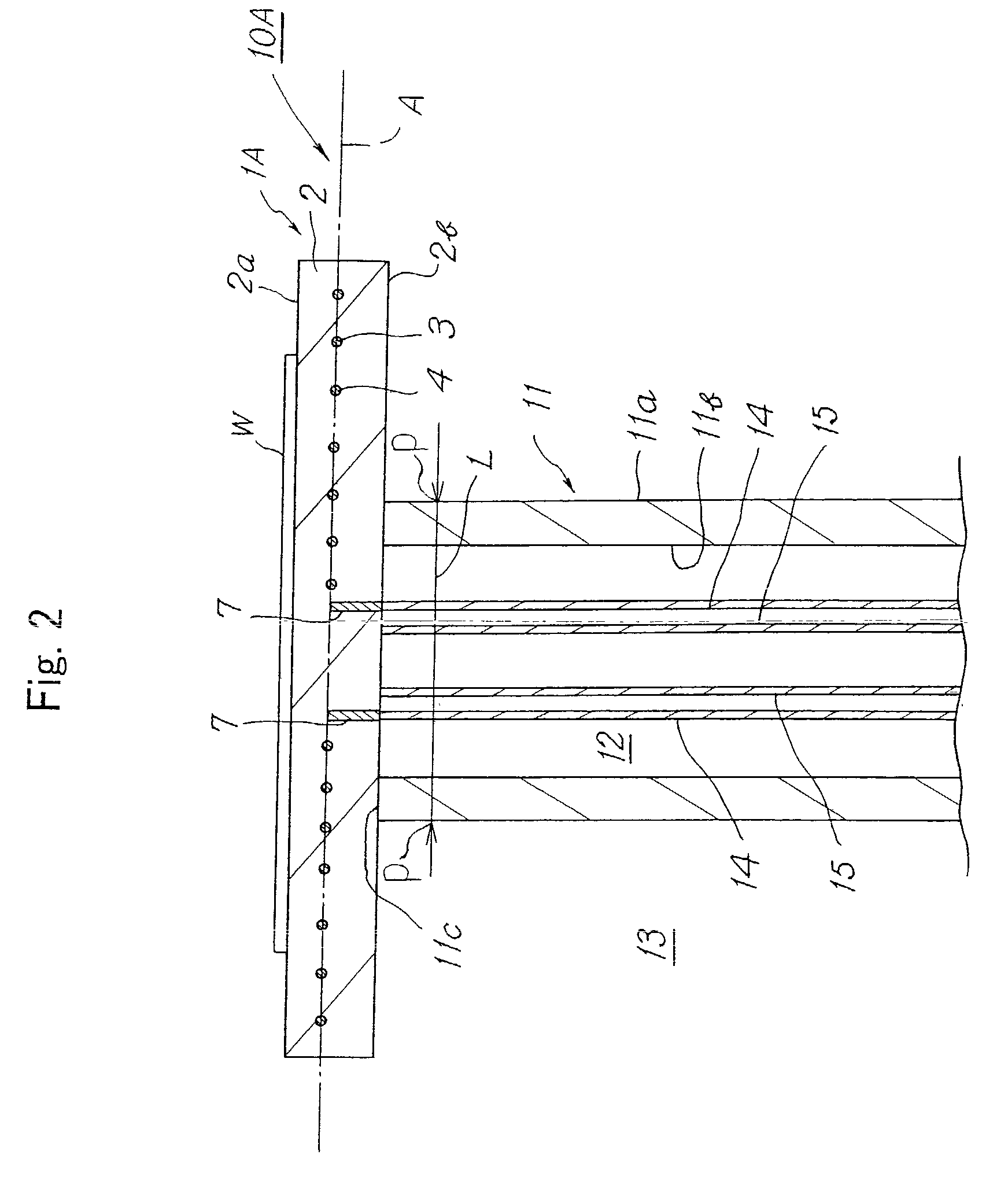Heating apparatus
a technology of heating apparatus and mounting face, which is applied in the direction of heating arrangement of hot plates, heaters, and ohmic resistance heating, etc., can solve the problems of uneven temperature on the mounting face, excessive thermal conduction in the thickness direction of the substrate, and heat capacity differences, so as to prevent an increase in the heat capacity of the heating system, improve the temperature uniformity on the mounting face of semiconductors, and facilitate the fixing of heaters
- Summary
- Abstract
- Description
- Claims
- Application Information
AI Technical Summary
Benefits of technology
Problems solved by technology
Method used
Image
Examples
example 1
[0070]The heating apparatus shown in FIGS. 1 to 3 was produced. The substrate 2 was made of an aluminum nitride sintered body. The substrate 2 had a diameter φ of 250 mm and a thickness of 10 mm. The second heating element 4 was embedded in the substrate 2 and in the inner zone 16 having a diameter φ of 200 mm, which corresponded with the diameter of a semiconductor wafer to be mounted on the mounting face. The first heating element 3 was embedded in the substrate 2 and in the outer zone 17 whose inner diameter was 200 mm and outer diameter was 250 mm. Each of the heating elements had a shape of a coil spring and was made of molybdenum. Each of the terminals 6A and 7 had a cylindrical shape and was made of molybdenum. The conductive connectors 8A and 9A were molybdenum wires.
[0071]The supporting member 11 was formed of an aluminum nitride sintered body. The supporting member 11 had an outer diameter φ of 80 mm, an inner diameter φ of 50 mm and a length of 250 mm. The supporting memb...
example 2
[0072]The heating apparatus 10B shown in FIGS. 4 to 6 was produced. The substrate 2 was formed of an aluminum nitride sintered body. The substrate 2 had a diameter φ of 250 mm and a thickness of 10 mm. The second heating element 4 was embedded in the substrate and in the inner zone 16 having a diameter φ of 200 mm, which corresponded with the diameter of a semiconductor wafer to be mounted on the mounting face. The first heating element 3 was embedded in the substrate 2 and in the outer zone 17 whose inner diameter was 200 mm and outer diameter was 250 mm. Each of the heating elements had a shape of a coil spring and was made of molybdenum. Each of the terminals 6B and 7 had a cylindrical shape and was made of molybdenum. The conductive connectors 9A and 8B were molybdenum wires. The connecting member 15 is formed of a coil spring made of molybdenum.
[0073]The supporting member 11 same as the example 1 was prepared. The supporting member 11 was solid-phase welded to the back face 2b ...
PUM
 Login to View More
Login to View More Abstract
Description
Claims
Application Information
 Login to View More
Login to View More - R&D
- Intellectual Property
- Life Sciences
- Materials
- Tech Scout
- Unparalleled Data Quality
- Higher Quality Content
- 60% Fewer Hallucinations
Browse by: Latest US Patents, China's latest patents, Technical Efficacy Thesaurus, Application Domain, Technology Topic, Popular Technical Reports.
© 2025 PatSnap. All rights reserved.Legal|Privacy policy|Modern Slavery Act Transparency Statement|Sitemap|About US| Contact US: help@patsnap.com



